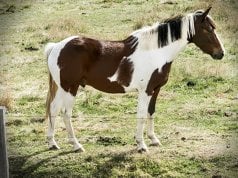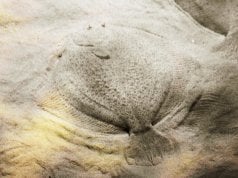The rainforests of Southeast Asia hold many secrets, but few are as visually striking and behaviorally complex as the Great Argus, Argusianus argus. This large pheasant is a master of illusion, a display specialist, and a crucial component of its ecosystem. Beyond its stunning plumage, the Argus possesses a fascinating history, intricate social behaviors, and a delicate relationship with both its environment and humanity. This article dives deep into the world of the Great Argus, exploring everything from its evolutionary origins to its role in local cultures, and providing insights for those seeking to observe, study, or care for this magnificent bird.

What is a Great Argus?
The Great Argus is a large, ground‑dwelling bird belonging to the pheasant family, Phasianidae. Males are significantly larger and more ornamented than females, boasting an elaborate display arena and intricate plumage. The bird is renowned for its unique courtship rituals, where males transform the forest floor into a stage to attract potential mates. It is a relatively shy creature, preferring the dense undergrowth of primary and secondary rainforests. Identifying an Argus relies heavily on recognizing its distinct characteristics and understanding its habitat preferences.
Physical Characteristics
Males can reach impressive sizes, measuring up to about 93 centimeters in length and weighing between 1.4 and 2.0 kilograms. Their plumage is primarily a rich, dark brown, punctuated by iridescent green and blue on the breast and wings. The tail feathers are long and curved, creating a sweeping effect during display. Females, in contrast, are considerably smaller, reaching around 70 centimeters in length, and their plumage is a mottled brown, providing excellent camouflage. This difference in size and coloration, known as sexual dimorphism, is a direct result of evolutionary pressures related to mate selection and parental care.
Habitat and Distribution
The Great Argus is found across Peninsular Malaysia, Sumatra, Borneo, and parts of mainland Southeast Asia including Thailand and Myanmar. It thrives in lowland dipterocarp and lower montane rainforests, typically at altitudes below 1500 meters. The bird prefers areas with dense undergrowth, providing cover from predators and suitable locations for displaying. Fragmentation of rainforest habitat due to logging and agricultural expansion is a major threat to Argus populations.
The Evolutionary History of the Argus
The Argus’s lineage traces back millions of years, reflecting the ancient origins of the pheasant family. While precise evolutionary relationships are still being investigated, genetic studies suggest a close link to other large pheasant species. The elaborate display behaviors and striking plumage likely evolved through sexual selection, where females preferentially choose mates based on the quality of their displays. The development of the display arena, a meticulously cleared patch of forest floor, is a particularly remarkable adaptation, showcasing the Argus’s ability to modify its environment to enhance its mating success.
Diet and Foraging Behavior
The Argus is an omnivorous bird, with a diet consisting of fruits, seeds, invertebrates, and small vertebrates. It forages primarily on the forest floor, using its strong legs and feet to scratch through leaf litter in search of food. Fruits and seeds make up a significant portion of its diet, especially during fruiting seasons. Invertebrates, such as insects and worms, provide essential protein, particularly during the breeding season. The Argus plays a role in seed dispersal, contributing to the health and regeneration of the rainforest ecosystem.
Mating and Reproduction
The Argus’s mating system is characterized by lekking behavior. Males establish display arenas, clearing a circular patch of ground and meticulously maintaining it. These arenas serve as gathering places where males compete for the attention of females. The males engage in elaborate displays, strutting, vocalizing, and spreading their plumage to impress potential mates. Females visit the leks to assess the males, often choosing the most dominant and impressive individuals.
The Display Arena
Creating and maintaining a display arena is a strenuous task, requiring significant energy expenditure. Males remove all vegetation, leaf litter, and debris from the arena, creating a smooth, bare patch of ground. They also create shallow depressions in the ground, which serve as focal points for their displays. The quality of the arena is often seen as an indicator of the male’s health and vigor.
Nesting and Chick Rearing
Once mated, the female builds a simple nest on the ground, concealed among vegetation. She typically lays two to four eggs, which she incubates for around 25 to 28 days. The chicks are precocial, meaning they are relatively mobile and independent shortly after hatching. The female provides parental care, protecting the chicks from predators and leading them to foraging sites. Chicks are particularly vulnerable to predation, and a high proportion do not survive to adulthood.
Ecological Role and Interactions
The Great Argus plays an important role in the rainforest ecosystem. As a seed disperser, it contributes to the regeneration of forests. It also serves as prey for larger predators, such as tigers, leopards, and eagles. Its foraging activities help to maintain the health of the forest floor, promoting nutrient cycling and decomposition. The Argus interacts with other bird species, competing for food resources and nesting sites.
Interactions with Other Animals
Argus chicks and eggs are vulnerable to predation by snakes, monitor lizards, and wild pigs. Adult Argus are less vulnerable but can still be targeted by larger predators. The Argus benefits from symbiotic relationships with certain plant species, relying on them for food and shelter. It also plays a role in controlling insect populations, consuming large numbers of invertebrates during the breeding season.
Argus and Human Interaction
Historically, the Great Argus has been hunted for its meat and feathers, though this practice has declined in recent years. The bird is now protected by law in many countries. However, habitat loss and fragmentation remain the most significant threats to its survival. Argus feathers are sometimes used in traditional costumes and ceremonies by indigenous communities.
Conservation Status and Threats
The Great Argus is currently classified as Least Concern by the International Union for Conservation of Nature (IUCN). While not currently considered endangered, populations are declining due to habitat loss, hunting, and disturbance. Conservation efforts focus on protecting rainforest habitat, reducing hunting pressure, and promoting sustainable forestry practices.
Encountering an Argus in the Wild
If you are fortunate enough to encounter an Argus in the wild, it is best to observe it from a distance and avoid disturbing its behavior. Maintain a respectful distance, and do not approach the bird or its nest. Avoid making loud noises or sudden movements. If you are hiking or trekking in Argus habitat, be aware of your surroundings and stay on marked trails.
Caring for Argus in Captivity
Zookeepers caring for Argus pheasants require specialized knowledge and facilities. Argus pheasants need a large enclosure with ample space for foraging and displaying. The enclosure should include dense vegetation, providing cover and simulating their natural habitat. Diet should consist of a variety of fruits, seeds, invertebrates, and commercial bird food. Providing enrichment activities, such as foraging puzzles and nesting materials, is essential for maintaining the bird’s physical and mental health.
The Great Argus is a magnificent creature, embodying the beauty and complexity of the rainforest. Its intricate displays, unique adaptations, and ecological role make it a vital component of Southeast Asian ecosystems. By understanding and appreciating this remarkable bird, we can contribute to its conservation and ensure its survival for generations to come.

![Red Angus Closeup of a beautiful Red Angus cowPhoto by: U.S. Department of Agriculture [pubic domain]https://creativecommons.org/licenses/by/2.0/](https://animals.net/wp-content/uploads/2020/03/Red-Angus-4-238x178.jpg)




![Red Angus Closeup of a beautiful Red Angus cowPhoto by: U.S. Department of Agriculture [pubic domain]https://creativecommons.org/licenses/by/2.0/](https://animals.net/wp-content/uploads/2020/03/Red-Angus-4-100x75.jpg)

